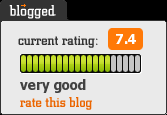I have been invited to interview for a public library system in southern California, so in an attempt to be the best candidate and land the job I have decided to conduct some surveillance on this library system in an attempt to better understand how they organize the books in their collection.
From navigating their OPAC, I have been able to tell a couple of things. For example, this particularly library uses the Dewey Decimal System because a particular book, Eduardo Galeano's "Mirrors" has a call number, 909, and that specific class is for World History. Dewey is used in smaller libraries that need an easy way to orient their clients, like public school libraries and public libraries.
Their OPAC uses SirsiDynix which is a bibliographic management system. They have recently completed projects with Carnegie Mellon, and from the website I believe that the system I am interviewing with uses the Horizon product. But bullets from the SirsiDynix brochure selling the inferior product, Symphony (for 1 location libraries), leads me to phrases I am not completely familiar with like "n-tier architecture". According to Wikipedia, which is pretty good with technical descriptions, an n-tier architecture is "a client–server architecture in which the presentation, the application processing, and the data management are logically separate processes. For example, an application that uses middleware to service data requests between a user and a database employs multi-tier architecture. The most widespread use of multi-tier architecture is the three-tier architecture."
Spicaresque:
A Spanglish blog dedicated to the works, ruminations, and mongrel pyrotechnics of Yago S. Cura, an Argentine-American poet, translator, publisher & futbol cretin. Yago publishes Hinchas de Poesia, an online literary journal, & is the sole proprietor of Hinchas Press.
Subscribe to:
Post Comments (Atom)

.png)

No comments:
Post a Comment